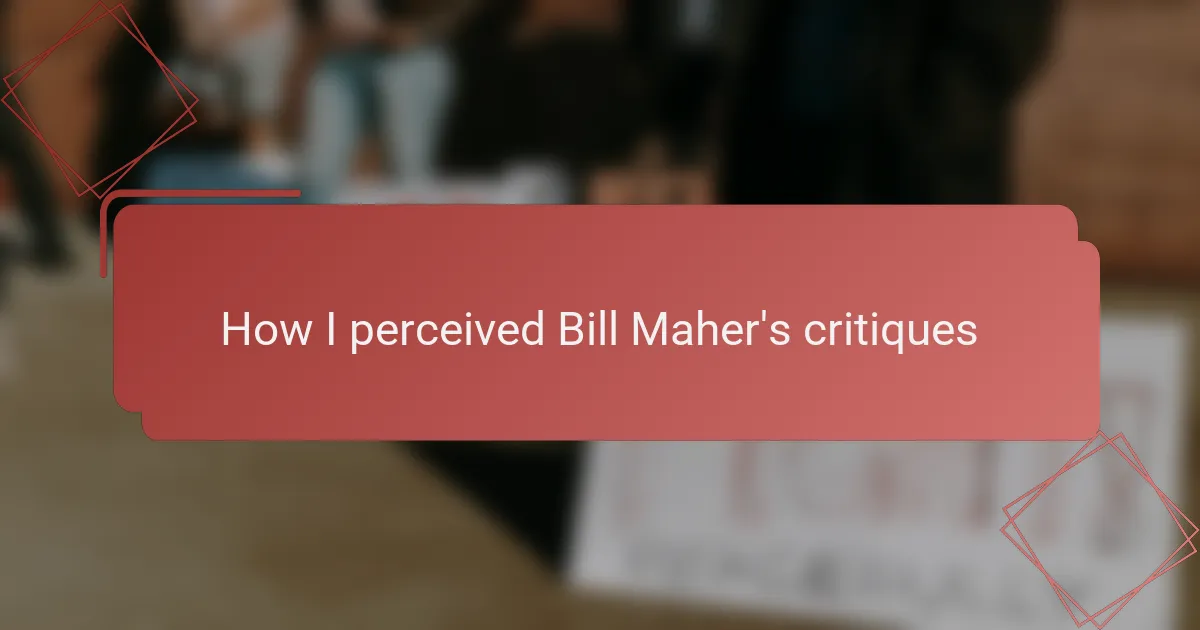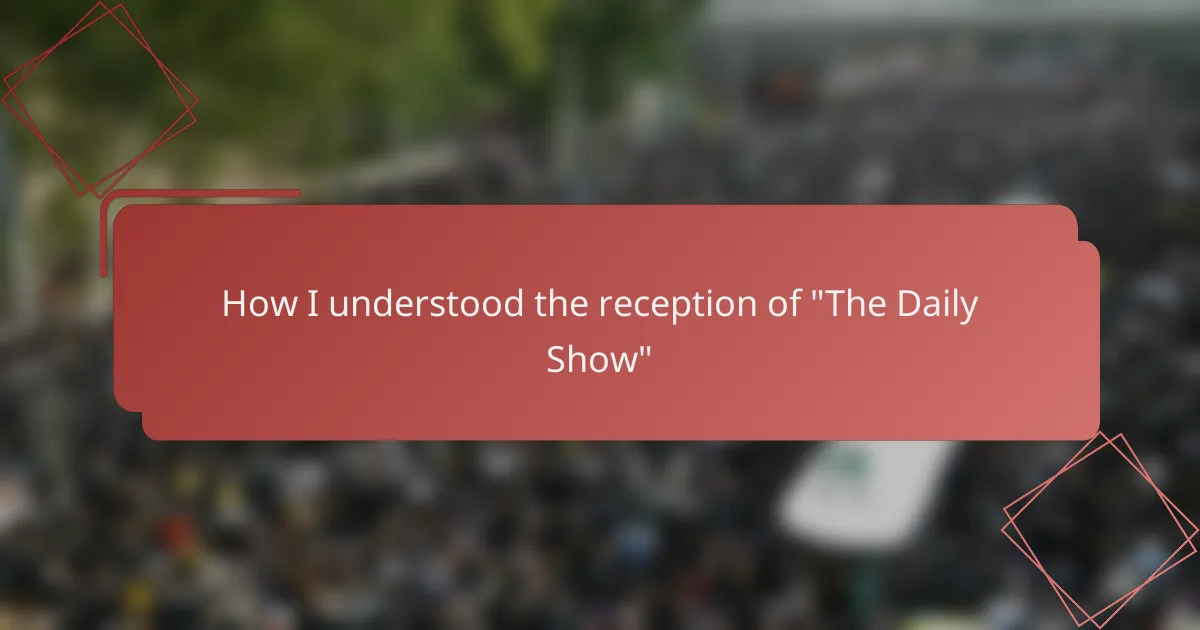Key takeaways
- Political satire, particularly in the style of Stephen Colbert, uses irony and exaggeration to reveal deeper truths about societal issues and power structures.
- Colbert’s approach combines humor with critical reflection, encouraging audiences to engage thoughtfully with political topics.
- Effective satire blends sharp wit with relatable critique, making complex issues more accessible and promoting dialogue among viewers.
- Analyzing satire involves breaking down its components, examining tone, and understanding the emotional impact to appreciate its critique fully.
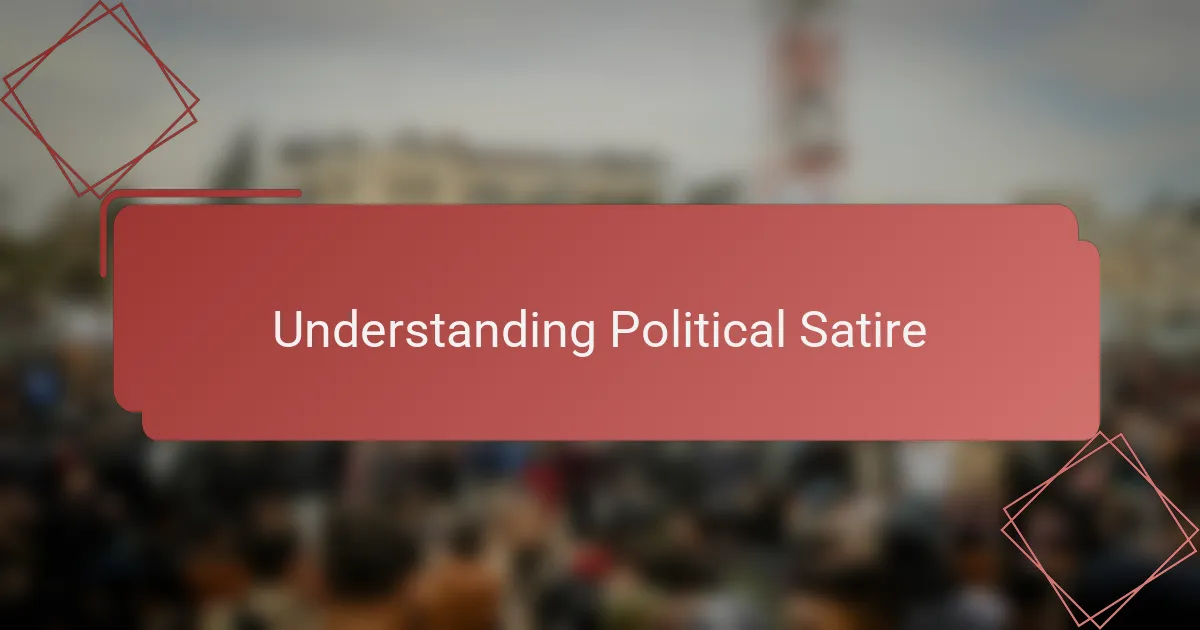
Understanding Political Satire
Political satire is not just about making fun of politicians; it’s a clever way to reveal deeper truths about society and power structures. When I first started analyzing Stephen Colbert’s satire, I realized how much nuance is packed into his humor—each joke often carries a layer of critique that challenges viewers to think beyond surface-level comedy.
What fascinates me is how satire uses irony, exaggeration, and wit to expose contradictions in political discourse. In Colbert’s case, his character’s deliberate over-the-top patriotism forces audiences to question real political rhetoric. This approach not only entertains but also encourages critical reflection, making satire a powerful tool for social commentary.
- Employs irony to highlight hypocrisy in politics
- Uses exaggeration to magnify absurdities
- Relies on wit to engage and provoke thought
- Creates fictional personas to challenge real-world views
- Encourages viewers to think critically about current events
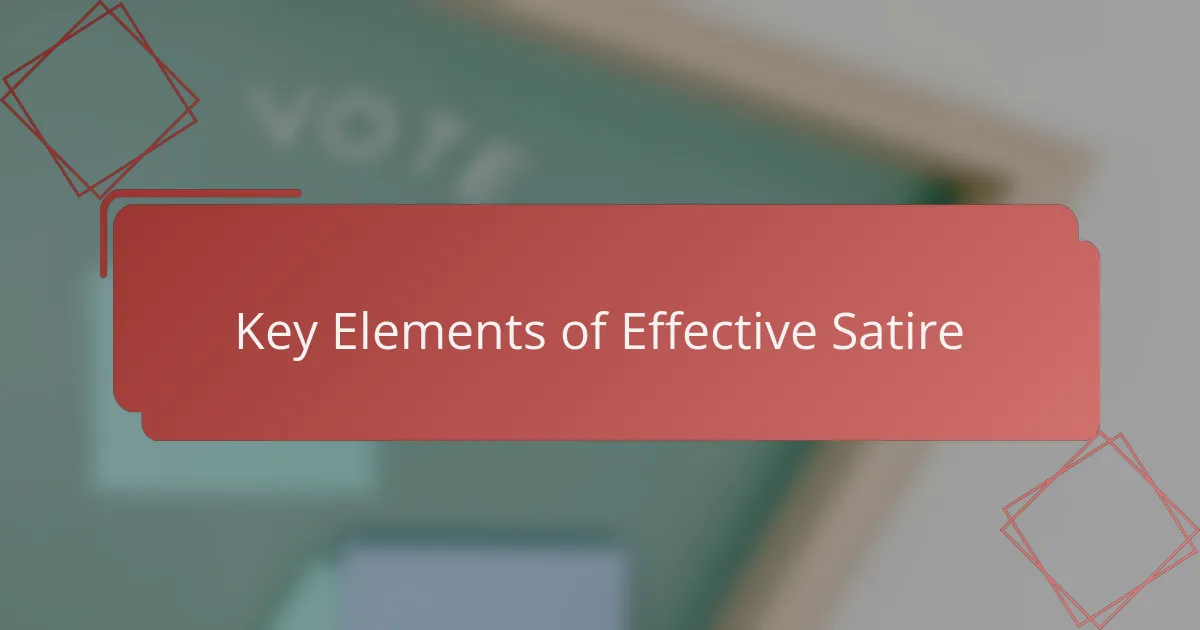
Key Elements of Effective Satire
What really stands out to me about effective satire is its sharp use of irony. When Colbert flips political statements on their head, it’s like he’s holding up a funhouse mirror to society—distorted, yes, but revealing where things truly go wrong. Have you ever caught yourself laughing and then suddenly thinking, “Wait, there’s truth in that joke”? That’s the power of well-crafted irony.
Exaggeration is another element I can’t overlook. It’s not just about making things bigger or wilder; it’s about spotlighting absurdities we might otherwise ignore. I remember watching Colbert take a mundane political claim and push it to an extreme—suddenly, the silliness of the original message became impossible to dismiss. That kind of amplification gets under your skin, in the best way possible.
Lastly, wit keeps the satire sharp and engaging. It’s the difference between a joke that just lands and one that sticks with you. When Colbert’s quick comebacks make me chuckle, I’m also nudged to rethink the issue at hand. This blend of humor and insight keeps the conversation going long after the show ends, which, to me, is the hallmark of satire done right.
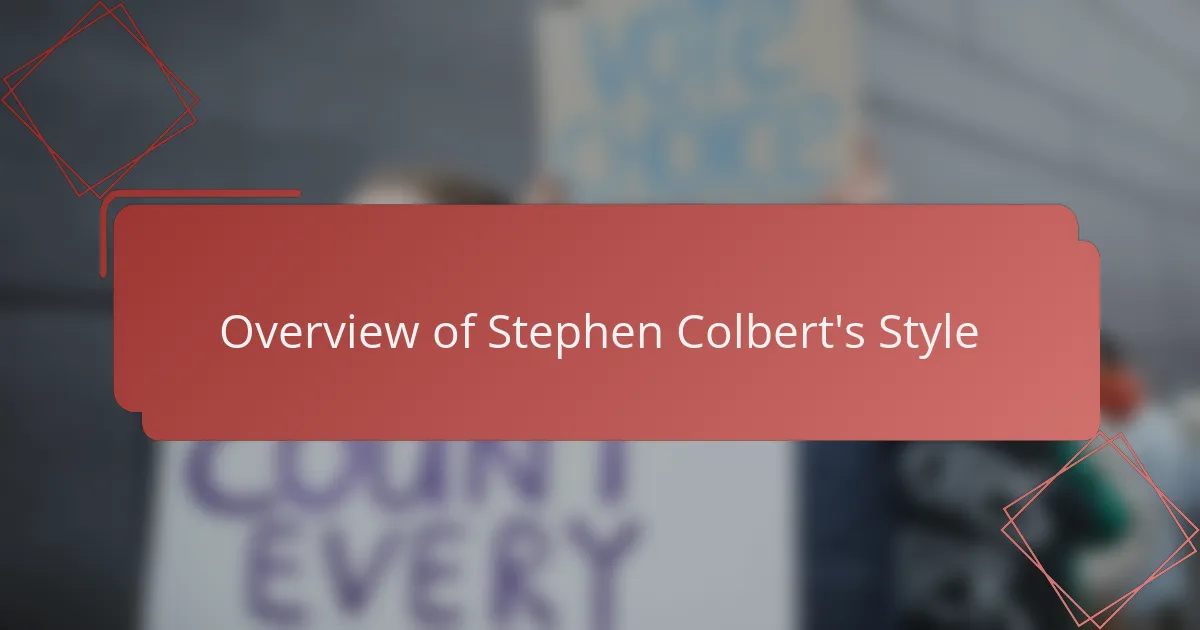
Overview of Stephen Colbert’s Style
Stephen Colbert’s style is a masterclass in blending sharp wit with incisive political commentary. From my experience watching his shows, I’ve noticed that his humor isn’t just about making people laugh—it’s about making them think. His persona often carries a layer of irony that teases out the absurdity hidden within serious political topics.
One thing that fascinates me about Colbert is how he uses satire as a tool to challenge power structures. His delivery feels conversational yet calculated, which makes even complex political ideas accessible. Here are some key elements that define his style:
- Persona-driven irony: Adopts a character that exaggerates political absurdities
- Smart layering: Combines humor with thoughtful critique
- Conversational tone: Makes satire feel relatable and direct
- Use of parody: Mocks political figures and media tropes skillfully
- Emotional connection: Engages viewers by mixing humor with genuine insights
- Timeliness: Responds quickly to current events to keep satire relevant
These points capture why I find Colbert’s satire so effective and enjoyable to analyze.
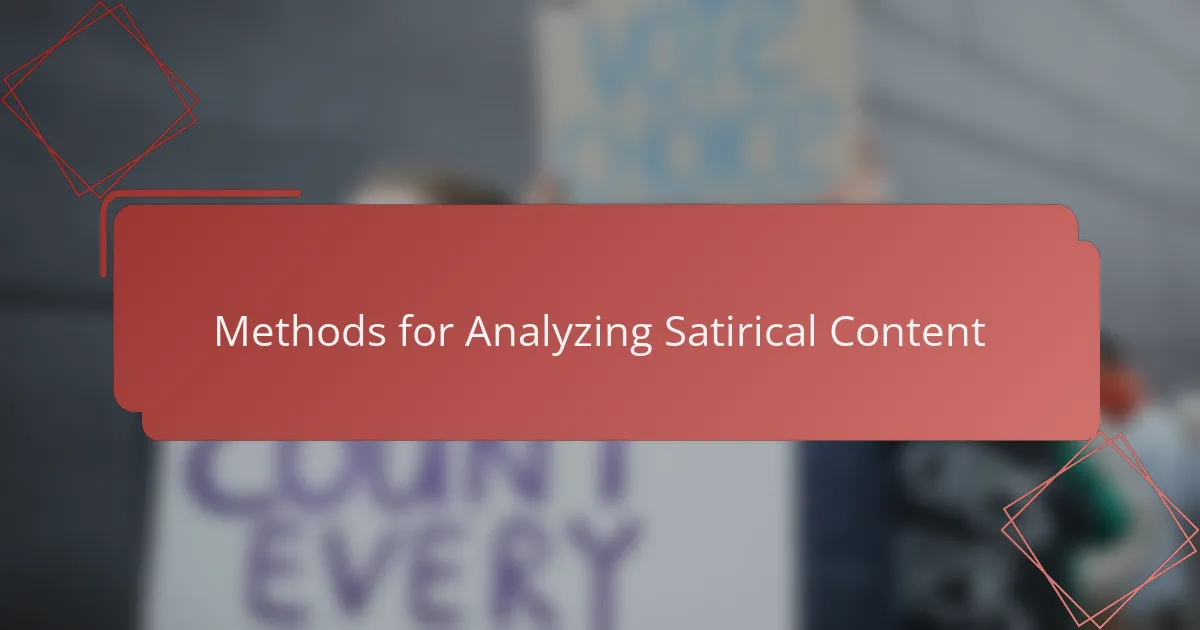
Methods for Analyzing Satirical Content
When I first approached Stephen Colbert’s satire, I quickly realized that understanding the layers beneath his humor required more than just watching the show. I had to pay close attention to the subtle cues in his tone and the way he exaggerated political personas. This method helped me appreciate the sharpness of his critique without getting lost in the surface-level comedy.
One technique I found invaluable was breaking down the satire into its core components and examining how Colbert juxtaposes real political events with absurd commentary. This approach not only clarified his intent but also deepened my respect for the intelligence behind his humor.
- Identify the target of the satire and the political issue addressed
- Analyze tone and delivery for irony and exaggeration
- Contextualize the satire within current political events
- Examine the use of parody and caricature to highlight absurdities
- Reflect on emotional impact and personal reaction to the content
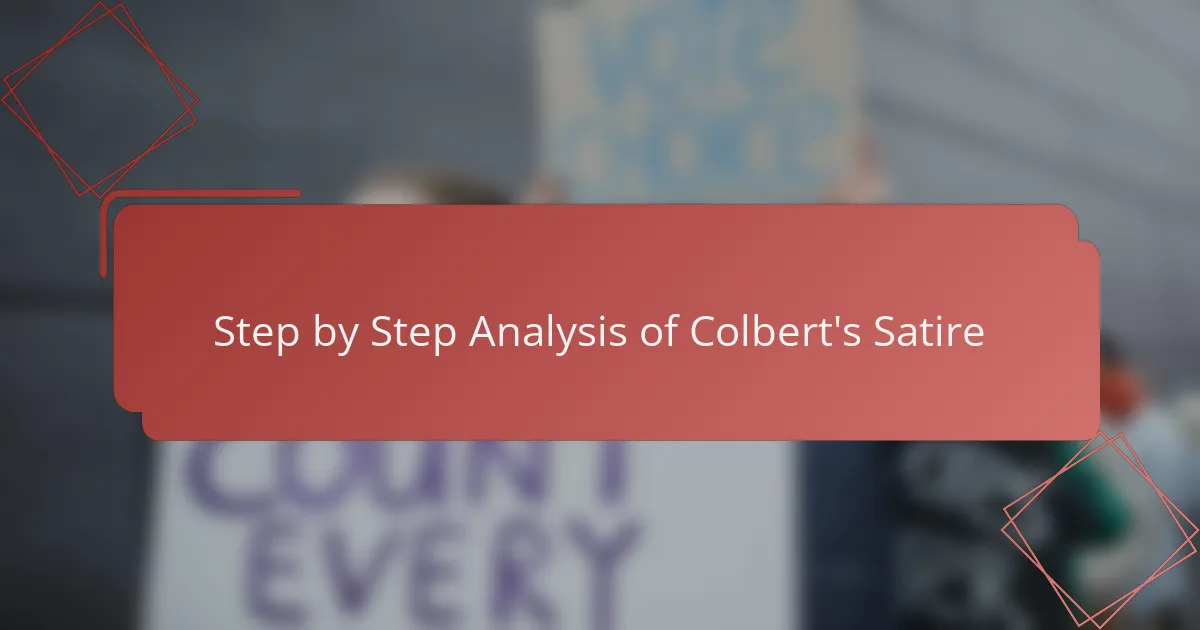
Step by Step Analysis of Colbert’s Satire
Step by Step Analysis of Colbert’s Satire
When I first dove into analyzing Stephen Colbert’s satire, I noticed how he masterfully blends irony with sharp political critique. He doesn’t just mock for humor’s sake; there’s a method to how he uses exaggeration to expose underlying truths about political figures and policies. It felt like peeling layers off an onion—each joke revealed deeper social commentary that was both clever and thought-provoking.
What struck me personally was Colbert’s skill in adopting a persona that mirrors the very absurdities he targets. This approach not only engages the audience but makes the satire more relatable and poignant. I found that breaking down his use of tone, timing, and target helped me appreciate how satire goes beyond comedy—it’s a powerful tool for political reflection.
| Satire Element | Colbert’s Approach |
|---|---|
| Irony | Uses dramatic exaggeration to highlight contradictions in politics |
| Persona | Adopts a character that embodies the absurdity of subjects he critiques |
| Audience Engagement | Combines humor with relatable critique to provoke thought and discussion |
| Tone | Balances humor with seriousness to emphasize political issues |
| Timing | Strategic pauses and emphasis heighten the impact of punchlines |
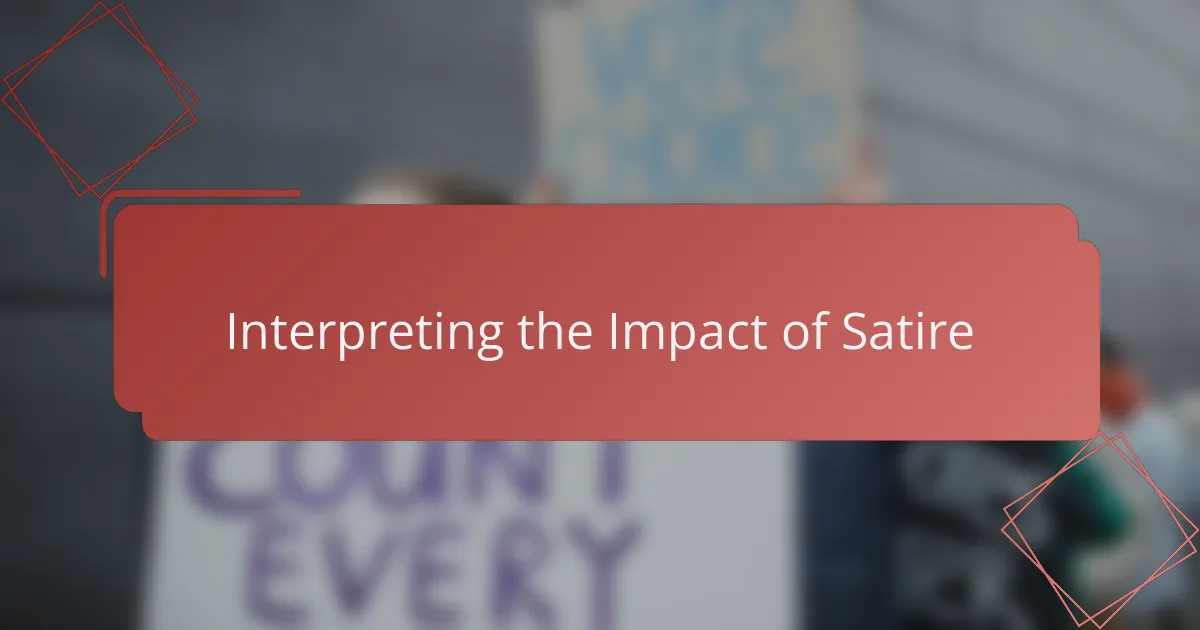
Interpreting the Impact of Satire
Interpreting the impact of Stephen Colbert’s satire requires understanding how it blends humor with sharp political critique. From my experience, his work doesn’t just entertain; it provokes thought and challenges viewers to question prevailing narratives. I’ve noticed that his satire often sparks lively discussions, making complex political issues more accessible and engaging for a wide audience.
| Aspect | Stephen Colbert’s Satire |
|---|---|
| Emotional Impact | Elicits laughter while encouraging critical thinking |
| Audience Engagement | Promotes dialogue by simplifying complex politics |
| Effectiveness | Balances humor with pointed social commentary effectively |
| Approach | Uses irony and exaggeration to expose contradictions |

